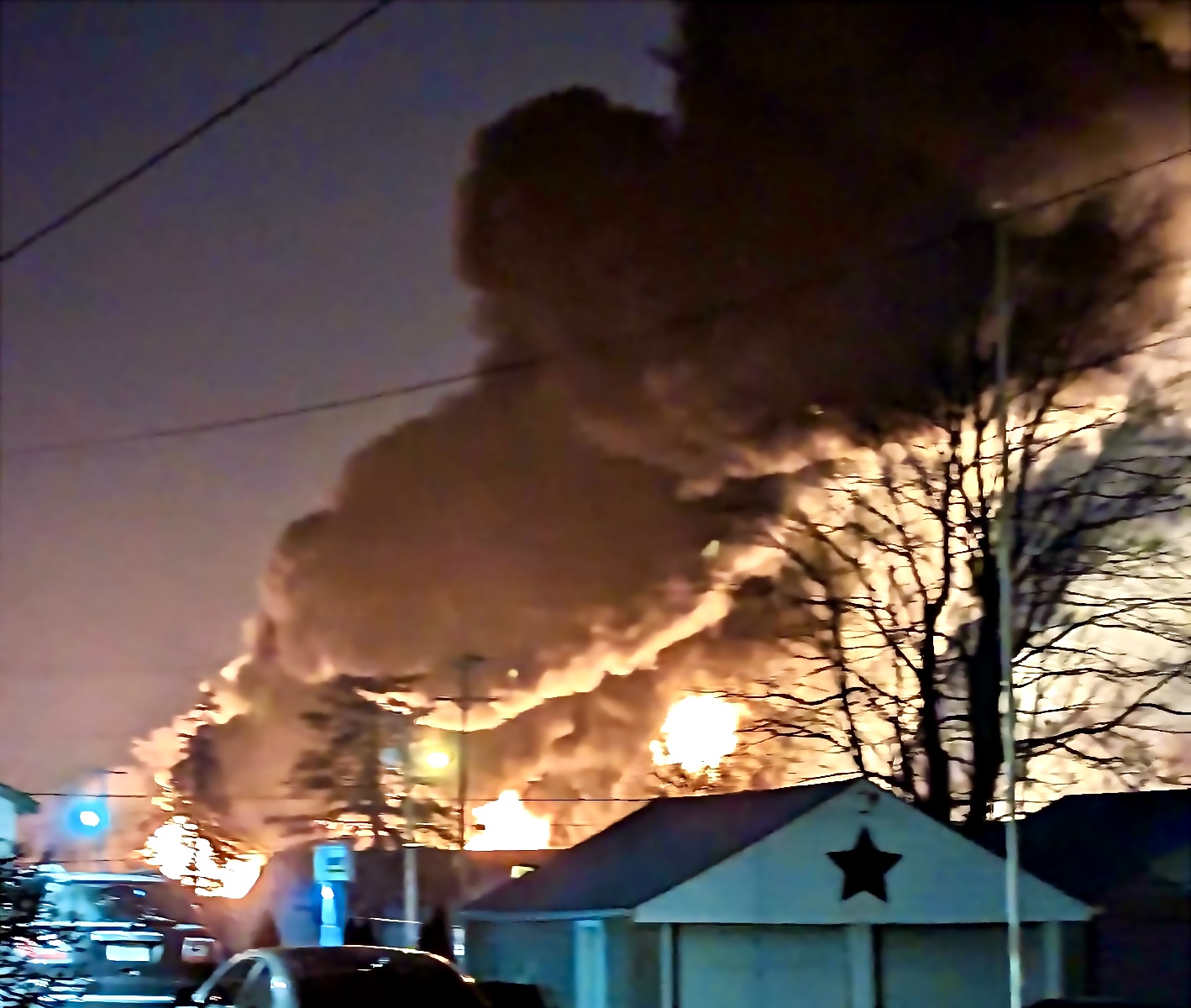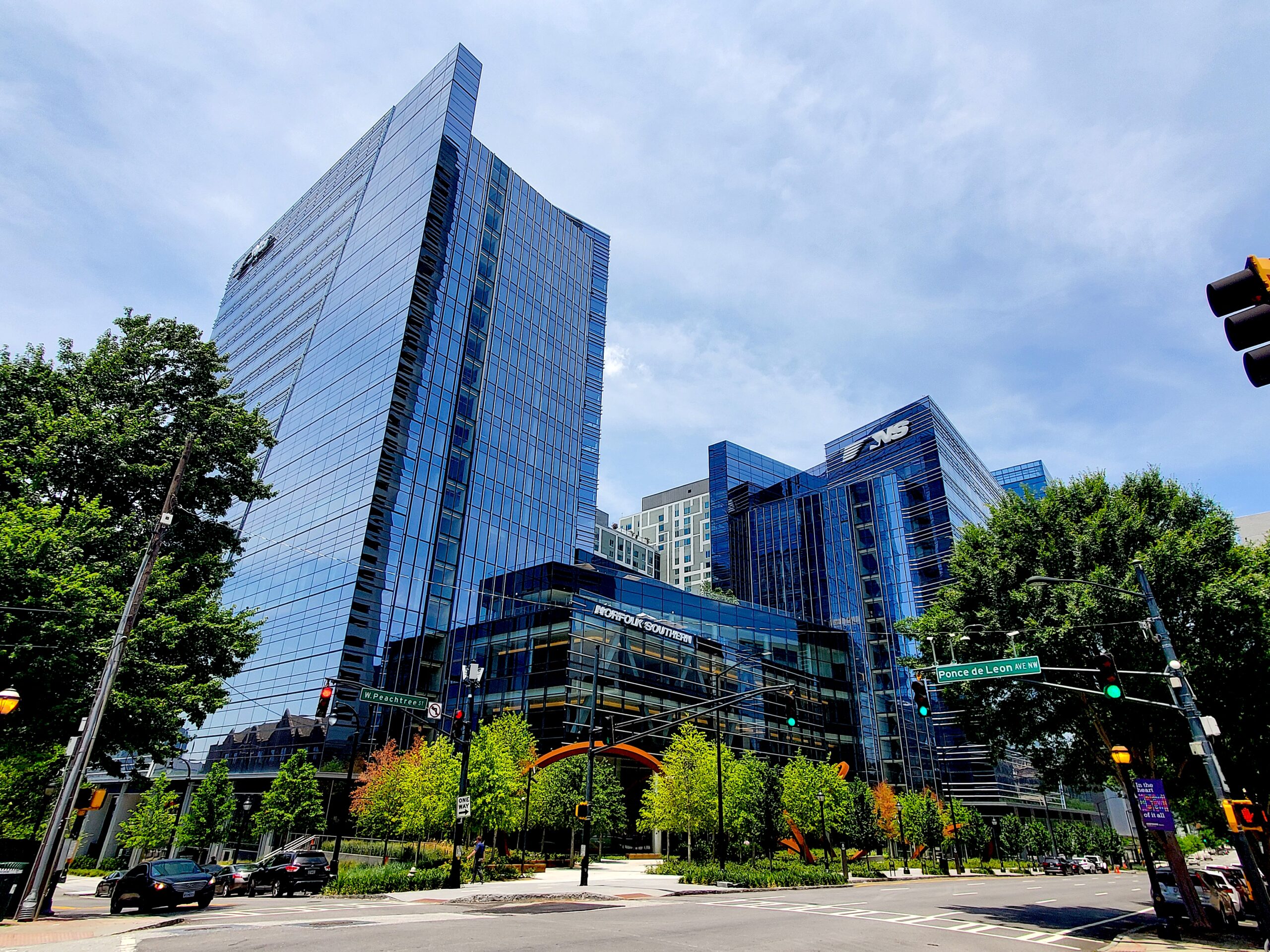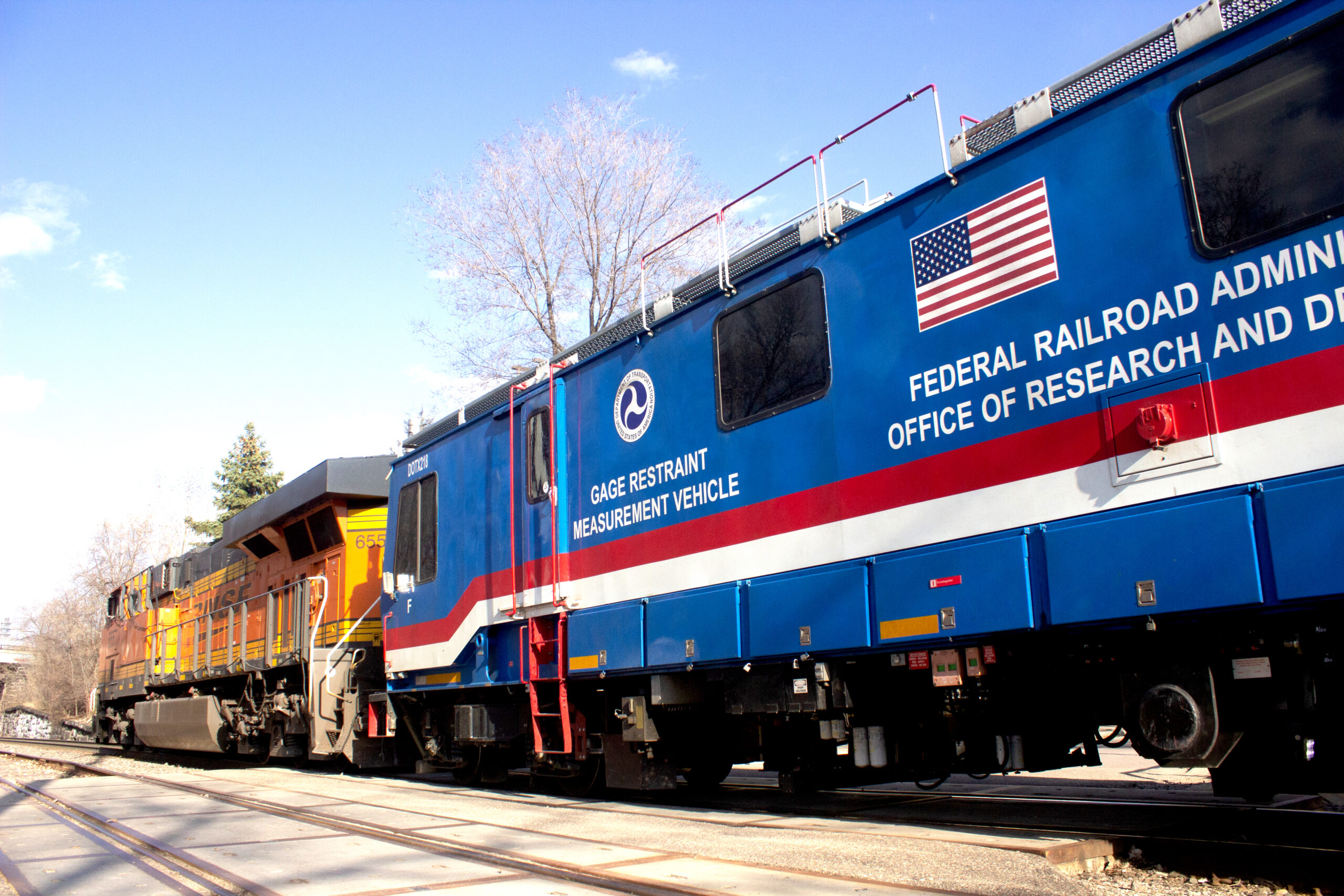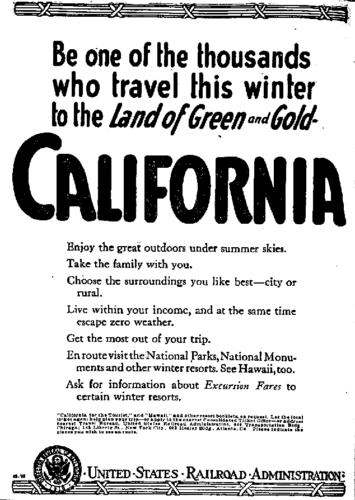There is little hope for any improvement of the U.S. rail system so long as it remains in the hands of the irresponsible and unaccountable Class I robber barons, writes Adam Barrington.

View from a front yard in East Palestine, Ohio, on the night of Feb. 3, 2023. (thunderlips36, CC BY-SA 4.0, Wikimedia Commons)
By Adam Barrington
Inequality.org
 The National Transportation Safety Board announced in June that the infamous East Palestine, Ohio, freight train derailment was caused by a defective wheel bearing.
The National Transportation Safety Board announced in June that the infamous East Palestine, Ohio, freight train derailment was caused by a defective wheel bearing.
But that technical issue does not tell the whole story.
Federal investigators found that the railway company Norfolk Southern failed to communicate information to emergency responders in a timely manner, which contributed to the exposure of responders and the public to post-derailment hazards.
According to the June 2024 NTSB report abstract on the derailment and hazardous materials release, Norfolk Southern’s delayed transmission of consistent information “also delayed the Ohio State Patrol’s recommendation to the incident commander that the shelter-in-place order be replaced by an evacuation.”
Norfolk Southern officials and contractors also provided misleading and incomplete information while advocating for an unnecessary vent and burn of tank cars carrying vinyl chloride. A vent-and-burn action is, according to the Federal Railroad Administration (FRA), a response of last resort.
Norfolk Southern began planning the vent and burn shortly after the derailment, rejecting three other removal methods that could have been far less dangerous to responders and the people of East Palestine.
While there may be some temptation to view the catastrophic derailment in East Palestine as an unfortunate fluke, the truth is that disastrous events are predictable features of the American rail system.
Under the private ownership of the Class I railroads, we have seen time and again the callous prioritization of profit over people. For the sake of short-term profit, inspections are cut short, tracks and equipment are not maintained, and the rail workforce is gutted — features of an industrial system that calculates derailments as part of the cost of doing business.
The Class I railroads’ — the largest domestic rail carriers — pursuit of short-term profit has led to critical understaffing, longer trains, diminished maintenance of tracks and equipment, inadequate inspections, and other underinvestments that leave rail workers and trackside communities vulnerable to derailments and disasters.

Headquarters for Norfolk Southern Railway in Atlanta, June 2022. (JJonahJackalope, CC BY-SA 4.0, Wikimedia Commons)
The Class I railroad robber barons are perfectly willing to risk the lives of workers and people living in trackside communities so long as it means more money for them and their shareholders. This is not hyperbole.
Between 2013 and 2022, the rate of rail accidents rose 28 percent as a result of the implementation of Precision Scheduled Railroading (PSR). In short, the philosophy of PSR can be summed up as “speed over safety.” Since 2015, over 50,000 railroad workers — nearly 30 percent of the rail workforce — have been laid off. The workers who remain on the railroads experience chronic fatigue as a result of unpredictable schedules and critical understaffing.
Last spring, it was reported that Union Pacific, one of the six Class I rail carriers, undermined government safety assessments and retaliated against workers who reported rail car flaws. In 2023, the FRA found that 73 percent of Union Pacific locomotives have federal defects.
According to the NTSB, Norfolk Southern interfered with the East Palestine investigation and abused its status as a party to the probe. NTSB Chair Jennifer Homendy revealed that she was threatened by Norfolk Southern during a private exchange with a senior company executive two weeks prior to the NTSB East Palestine board meeting.
These are but a few examples of the criminality and nefariousness that characterize the privately owned rail system.
What’s more, even if one puts aside moral questions regarding the behavior of the Class I railroads, one finds an industry being strangled to death by a get-rich-quick scheme that victimizes workers and trackside communities, cheats small shippers, and — because the rail robber barons are completely allergic to capital expenditure — dooms the U.S. rail system to degradation and ossification.
How It’s Regulated

A track checking vehicle owned by the Federal Railroad Administration. (Nicholas Morgan, Wikimedia Commons, CC BY-SA 4.0)
Another concern is how the American rail system is regulated. While the FRA is ostensibly tasked with overseeing and regulating U.S. railroads, this arrangement becomes murky when one considers the significant degree of industry influence.
The Association of American Railroads (AAR), the industry group representing the interests of North America’s major rail corporations, sets its own safety standards and works closely with the FRA, effectively as an independent regulatory body. AAR even manages the FRA’s Transportation Technology Center through its wholly-owned subsidiary, Transportation Technology Center, Inc.
In the NTSB investigation of the East Palestine derailment, AAR’s standards for hot bearing alerts and alarms came under scrutiny, as they served as the guide for Norfolk Southern’s own criteria that contributed to the disaster.
It is worth noting that under the Trump presidency, railroad industry executive Ronald Batory was made FRA administrator, further blurring the line between government regulator and regulated industry.
With the foxes running the henhouse, simple demands for more and better regulation of the railroad industry are inadequate. The real solution, advocated by Railroad Workers United (RWU) and allied organizations across the country, is public ownership of the railroads.
Last spring, RWU launched the Public Rail Ownership (PRO) campaign, building a diverse coalition including rank-and-file unionists, environmentalists, progressives, community activists, and others calling for a rail system that operates in the public interest.
The campaign has hosted webinars, published scholarly works such as Maddock Thomas’ “Putting America Back on Track: The Case for a 21st Century Public Rail System,” and attended union conferences to make its case.
What a publicly owned and operated rail system in the United States will look like has yet to be determined, but there are models that can serve as guides.
Inspiration in US History

USRA ad in a newspaper in Ogden City, Utah, Nov. 11, 1919. (USRA- Director General of Railroads – The Ogden Standard, Public domain, Wikimedia Commons)
The rail system in the U.S. is, compared to other countries, an anomaly in that it is predominantly owned by private companies.
This was not always the case, and there’s inspiration to be found in U.S. history for the development of a 21st century public rail system.
During World War I, the U.S. rail system was nationalized amid a consensus that the private rail system was unable to serve the needs of the country during wartime.
Under the control of the U.S. Railroad Administration (USRA), the railroads operated far more efficiently and effectively than they had under private ownership.
Working conditions and service improved drastically, winning the support of workers, shippers, and much of the public. The nationalized rail system was so popular among rail workers that in a 1918 American Federation of Labor-sponsored referendum, the vote to keep the nation’s railroads in public hands was overwhelmingly in favor: 306,720 to 1,466.
A public rail system would directly benefit workers, trackside communities, small shippers, farmers, passengers, and the environment. The Class I carriers have made it clear that they have no intent to expand rail, or take the crucial step towards full catenary electrification.
Under public ownership, the fetters of the short-term profit motive would be cast off the rail system, opening the door to large-scale infrastructure modernization and expansion projects, creating jobs in construction and spurring economic development in neglected areas of the country.
A publicly owned and operated rail system would also create thousands of railroad jobs, as the stripped-to-the-bone PSR model advocated by the Class I carriers would be destined for the dustbin.
The task at hand is massive, and the road ahead is fraught with challenges. However, there is little hope for any improvement of the U.S. rail system so long as it remains in the hands of the irresponsible and unaccountable Class I robber barons.
RWU and its allies invite all organizations and individuals to get involved in the Public Rail Ownership campaign, and help make public rail a reality. For more information, please visit publicrailnow.org.
Adam Barrington is a staff member of Railroad Workers United and a national organizer for the Public Rail Ownership Campaign.
This article is from Inequality.org.
The views expressed are solely those of the author and may or may not reflect those of Consortium News.

Hello Adam from the UK. Incredible in depth article- I had to read it twice.
Everything they privatized here in the UK under the false premise that competion will improve quality and lower fares. Our rail system is officially in the gutter ( thanks Branson) and our heretofore perfectly functioning NHS is slowly being sold off- hence huge delays, poor service and greedy snakes hovering to eat it all up ( thanks Branson).
Public services should and must be for the good of the public- not corporate drooling crooks.
Recnt research has found that the increasing use of longer trains – popular with rail companies, as they require fewer staff per ton of freight – is a significant factor in derailments.
‘Longer and Longer Freight Trains Drive Up the Odds of Derailment”
Scientific American, June 18, 2024
“Replacing two 50-car trains with a single 100-car train increases the odds of derailment by 11 percent, according to a new risk analysis”
They should have been nationalized from the earliest days of the RR, as all corporations should be.
Excellent article! Does the GPUSA have a position on this?
It’s GPUS, not GPUSA. I will try to find a moment to check into that and get back to you.
ok, thanks!
NOT A SINGLE public entity serving the public should be in private hands…NOT ONE!!!
I agree with you.